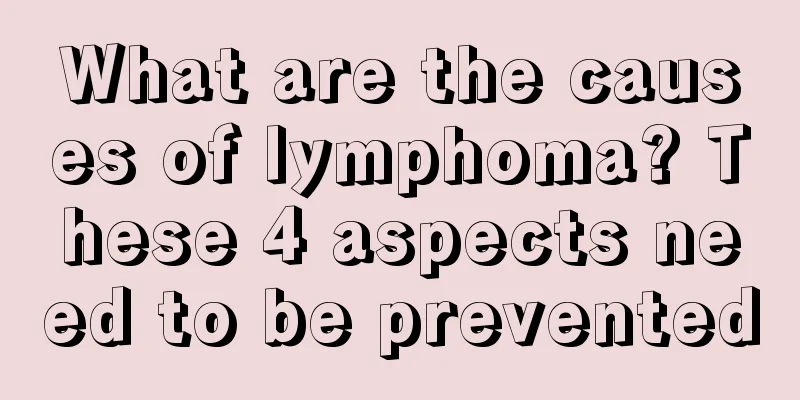What is the best way to check for encephalitis?

|
Regarding a treatment examination for encephalitis, the first thing to pay attention to is understanding the symptoms, such as whether there is a high fever, headache, loss of appetite, confusion, vomiting and convulsions, especially for newborn babies, who must be alert to these symptoms. 1. Symptoms 1. High fever (>40℃), stiff neck, severe headache, loss of appetite, confusion, vomiting, convulsions, fatigue, drowsiness, photosensitivity, small blood spots on the skin, skin rash {especially in the armpits, hands, and feet}. These symptoms of meningitis are similar to those of colds and are often the cause of misdiagnosis. Symptoms may change within one to two days, and some may become life-threatening within hours. 2. In infants and newborns, high fever, headache, and stiff neck are not typical symptoms, and sometimes low temperature may occur instead. The symptoms experienced by this group of patients include: high-pitched and continuous crying, unusual drowsiness, poor appetite, extreme sensitivity, and some having swollen fontanelles. 3. In the elderly, the above symptoms may or may not appear, but they may show latent symptoms such as confusion and dullness. 4. Severe bacterial meningitis may also cause symptoms such as shock, coma or convulsions {similar to epilepsy}. Neurological examination Whether there is visual impairment, optic disc edema, eye muscle paralysis, hearing loss, dysphagia, limb paralysis, pathological reflexes, changes in muscle tone, ataxia, involuntary movements (tremor, choreiform movements, athetosis), sensory impairment, urinary and fecal retention, incontinence and meningeal irritation signs, etc. 3. Auxiliary examination (1) General examination: Routine blood test: white blood cell count (10-20) × 109/L, neutrophilia, urine routine, erythrocyte sedimentation rate, cerebrospinal fluid pressure, routine, biochemical, cytological, immunoglobulin (IgG, IgA, IgM) determination, and blood mixed rosette rate determination. (2) Electrophysiological examination: electroencephalogram (EEG), brain evoked (visual, auditory, somatosensory) potentials. (3) Imaging examination: Brain CT or MRI examination. (4) Immunological examination of viral infection: Use enzyme-linked immunosorbent assay or polymerase chain reaction method to detect herpes simplex virus in blood and cerebrospinal fluid. Take two samples of serum for complement fixation test of epidemic encephalitis B, adenovirus, measles virus, poliomyelitis, influenza virus, etc. (the diagnosis can be confirmed if the titer of two samples increases by more than 4 times or the titer of one sample is more than 1:16), hemagglutination inhibition test (the diagnosis can be confirmed if the titer of two samples increases by more than 4 times or the titer of one sample is more than 1:320), adenovirus immunofluorescence examination, and poliomyelitis neutralization test. (5) Brain biopsy, immunofluorescence examination, and pathological histological examination. |
<<: What are the benefits of using a hot towel on your face? It turns out there are these 8 benefits
>>: Private parts whitening tips to help you say goodbye to embarrassment
Recommend
What's the matter with a line below the belly button
Some female friends find a line below their belly...
180cm standard weight
In China, a height of 1.8 meters can be said to b...
How to cure and eradicate flat warts
I believe that there are always some patients wit...
Does cinnamon have the effect of lowering blood sugar?
Cinnamon is a food that many people like to eat. ...
Expert: Talking while standing really won’t cause back pain
As the saying goes: Talking while standing will n...
What are the treatments for knee osteochondritis?
Knee cartilage inflammation is a relatively commo...
How to care for kidney cancer after surgery?
Since the early symptoms of kidney cancer are not...
Why do testicles hurt after masturbation?
Masturbation is not a big deal. It is a way to me...
Pelvic separation 0.5 vaginal bleeding
Pelvic separation of 0.5 cm accompanied by vagina...
Special care after laryngeal cancer surgery
People with throat cancer often need special care...
Why does the right side of my tongue hurt?
Pain on the right side of the tongue is a relativ...
All women have this fatal flaw
Medical experts have recently suggested that ever...
How to treat early lung cancer? There are 3 treatments for early lung cancer
Lung cancer is a malignant tumor that occurs in t...
What causes low blood oxygen and how to treat it?
Many people usually need to relieve their oxygen ...
What causes yellow urine with a strange smell?
Many people do not pay much attention to yellow u...









